8 Best Places to Visit in Sulmona, Italy
Famous since ancient times for being the birthplace of the Roman poet Publio Ovidio Nason, Sulmona is a stately but lively town that lies at the center of the wide Conca Peligna. This plateau lies about 350 meters above sea level. Located in central Abruzzo, Sulmona has grown from a small medieval village to a picturesque town surrounded by the green Maiella National Park. The city center has a vast architectural, historical and cultural heritage. At the same time, the surrounding areas are ideal for lovers of the outdoors as they are full of itineraries for hiking, walking, or biking. Ancient churches, stately palaces, city walls that guard architectural works of Roman origin: this is Sulmona, a city that, for its vast monumental heritage built in different styles, has long been known as “Siena of the Abruzzi.” Besides being known for its history, Sulmona is internationally famous for its delicious sugared almonds, a confectionary area for many years.
Hidden among some of the highest peaks of the Apennines, Sulmona is a town that boasts several sites of historical interest and a wide naturalistic heritage. Sulmona developed around the first century BC during the Roman era when the city was given a precise urban layout and built by the forum and the main public temples. The road layout of Sulmona derives right from Roman times, and the current main street of the city, called Corso Ovidio, was built over the original Roman cardo. This street in the center flows into the wide Piazza Garibaldi, where there is the famous aqueduct built by Manfredi of Swabia.
Porta Napoli
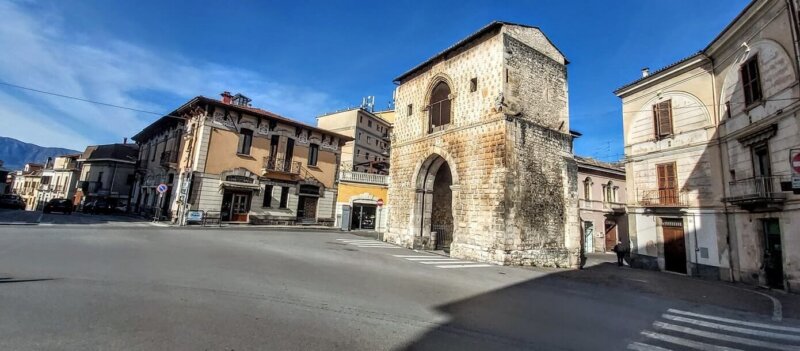
The city was originally defended by a city defense wall with seven gates that allowed access to the center. However, in the thirteenth century, during the Swabian domination, it was necessary to expand the city center area due to an exponential increase in population. Therefore, it was essential to build a second wall that had to contain the new housing area. In this period, Porta Napoli was created, whose name is because the gate is located on the road that connected Sulmona to Naples, the city that was the capital of the Kingdom. Initially, the second defensive circuit doors were eight, but only six have come down to our days, and Porta Napoli is undoubtedly the most monumental. The entry is located at the southern entrance of the historical center and allows access to the main street of Sulmona, which is Corso Ovidio. Porta Napoli has a rectangular plan; the lower part is characterized by rusticated ashlar masonry. The upper area has a smooth wall surface and houses a window whose corbels keep bas-reliefs of the Roman era with hunting scenes and sacrificial rites.
S. Maria della Tomba Church
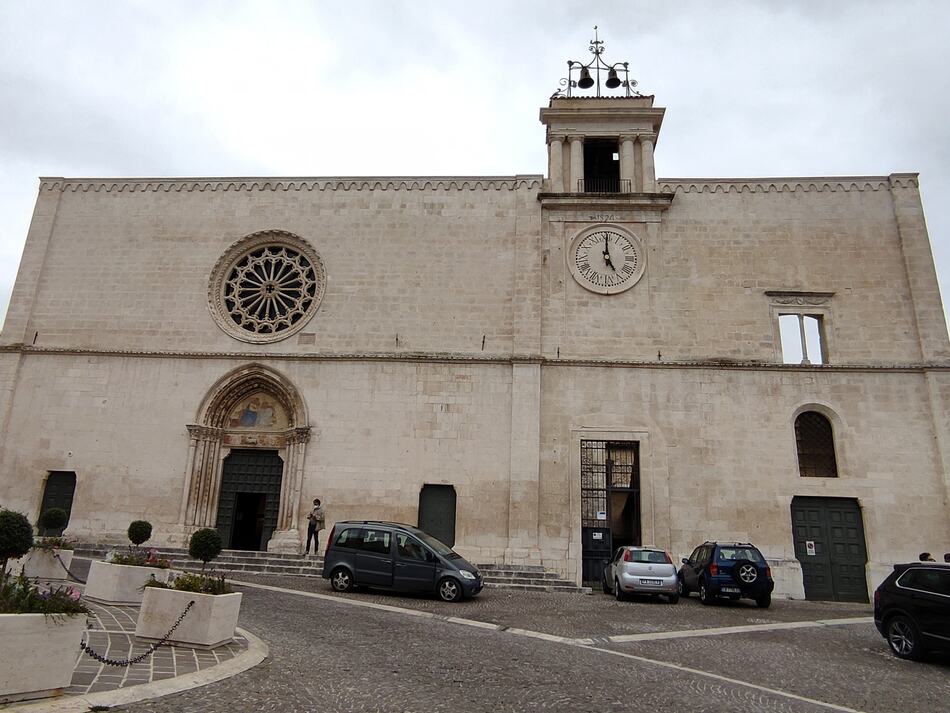
The Church of Santa Maria della Tomba owes its name to the fact that according to tradition, it was erected over a pagan sepulcher from which the name “della Tomba” derives; according to other legends, however, the building was built over the house of the poet Ovid. In fact, since the church is dedicated to the Virgin of the Assumption, the title Santa Maria della Tomba is the abbreviation for “Santa Maria dalla Tomba Assunta in heaven.” The first historical notes on this complex are considered one of Sulmona’s most important religious buildings, dating back to the 13th-14th century when this gave its name to an entire village. Over the centuries, the church has undergone several renovations and various transformations that have changed its original appearance. The last intervention dates back to a few years ago, following the earthquake that hit L’Aquila. Overlooking Piazza del Plebiscito, the religious building has a Romanesque-Gothic facade with a Gothic portal that houses the coat of arms of the Aragona family and is surmounted by a fifteenth-century rose window. The interior has a Latin cross plan and three naves with the presbytery, a semicircular apse, and a wooden trussed ceiling.
Medieval Aqueduct
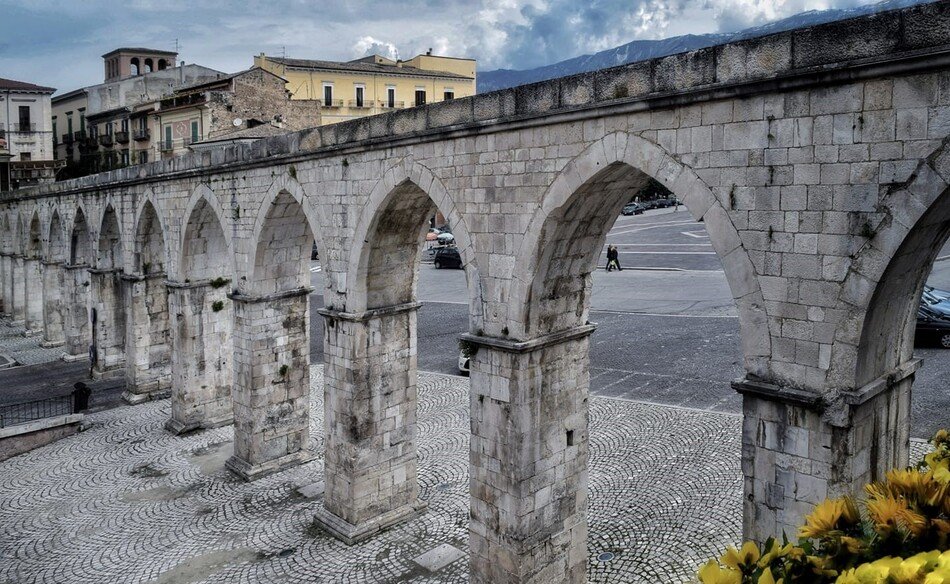
The medieval aqueduct rose along the western edge of Piazza Garibaldi and was built in 1256 by King Manfred of Swabia. About one hundred meters long, this work is the representation not only of the economic and demographic growth of Sulmona in that period but also of its important role as it was the seat of the Giustizierato and place of one of the most important annual fairs established in the Kingdom of Sicily for encouraging trade. To allow the city to be supplied with water, Manfredi di Svevia built this aqueduct to facilitate water inflow from the Gizio River. The aqueduct consisting of pointed arches supported by sturdy pylons in local limestone fed the local mills, served the artisan shops, and supplied water to the city fountains.
Sant’Antonio Abate Gate
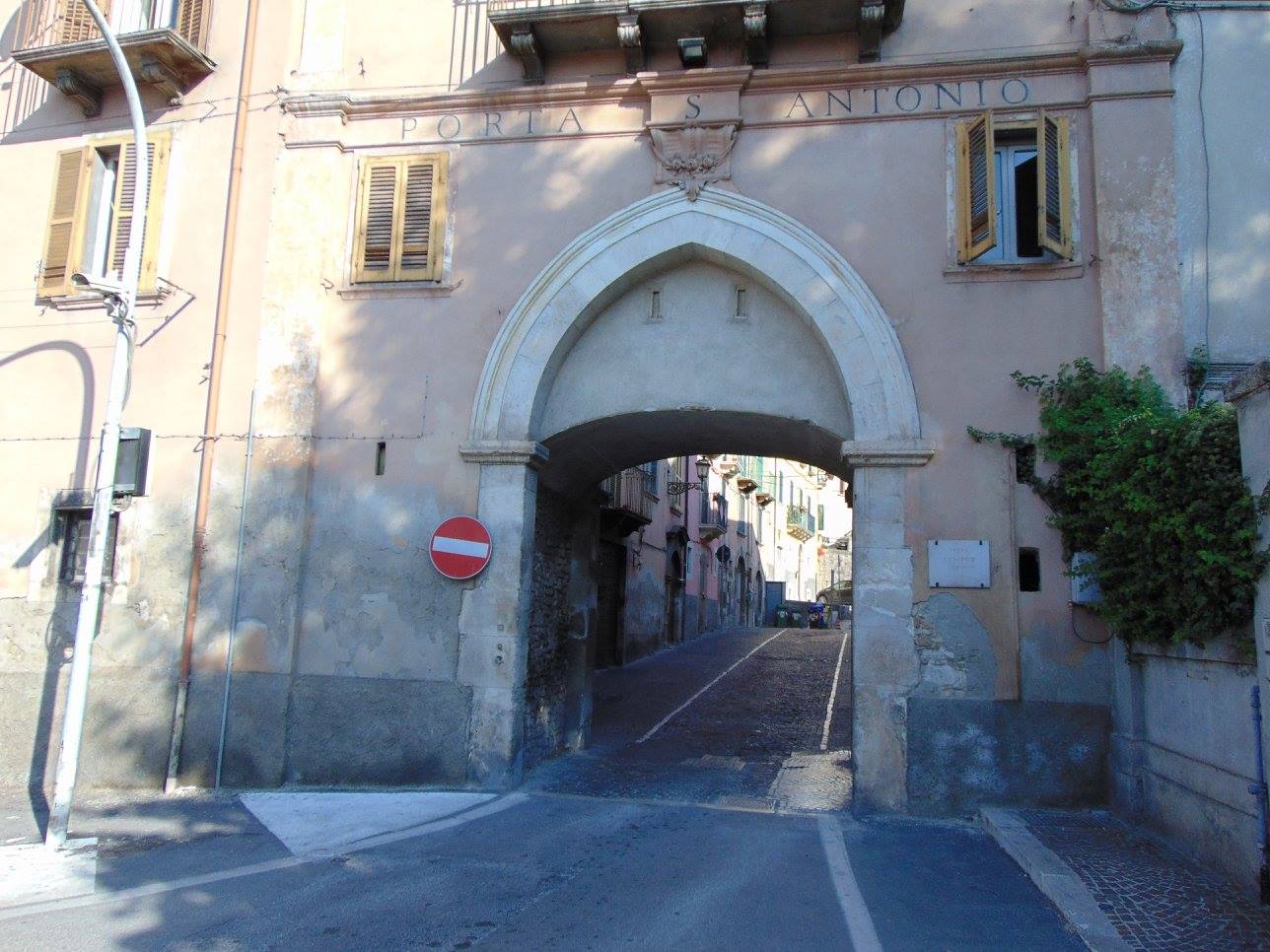
Porta Sant’Antonio Abate, like the Porta Napoli, was built later when it became necessary to build a second wall to include the new urban agglomeration born from the demographic expansion. The upper part of the door was initially used as housing for the Guard Corps. Still, over time, it became the private home of Domenico Granata, manager of the old town paper mill, who also had the coat of arms of the Granata family built right above the arch of the door. The external arch seems to date back to the end of the thirteenth century, while the internal one dates back to a later period and appears to have been made with less valuable materials.
Piazza Garibaldi
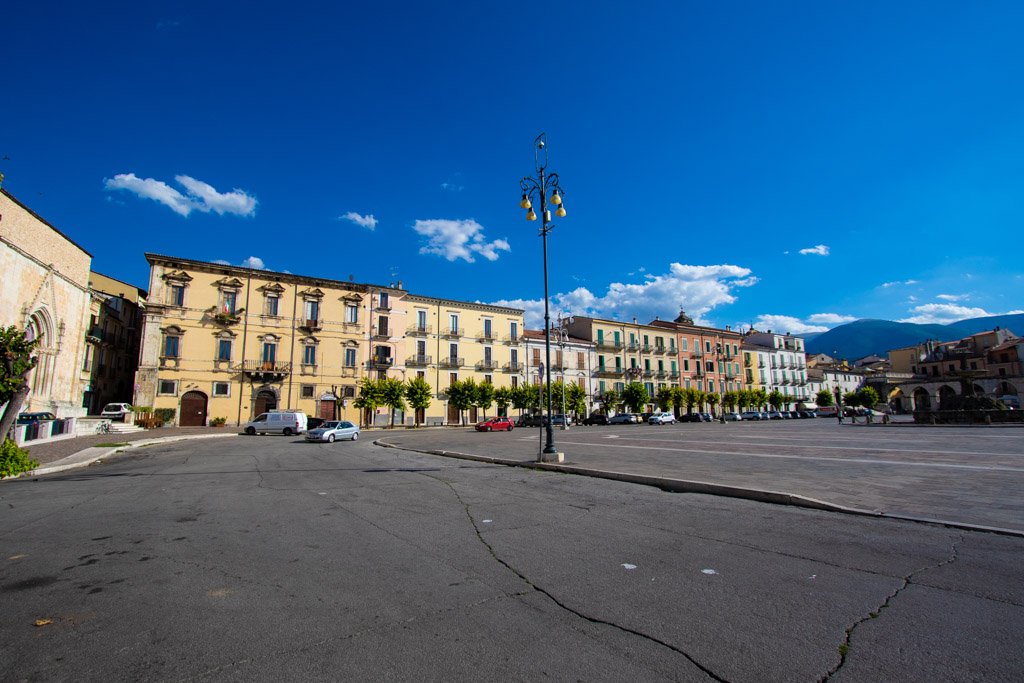
Going along Corso Ovidio, you arrive in Piazza Garibaldi, also known as Piazza Maggiore, which is the main square of Sulmona where the market was once held. The square has truly enormous dimensions, and here is the famous medieval aqueduct, dating back to the Swabian period, and the Fontana del Vecchio, one of the oldest in Sulmona, which owes its name to the bearded statue that is carved and which is linked to Solimo, founder of the city. In addition, the square is home to several ancient buildings such as the Church of San Filippo Neri, the monastery church of Santa Chiara d’Assisi, the Church of San Rocco, Palazzo Anelli, and in the center of the square, there is a fountain made by the master Felice di Cicco.
Ovid’s Statue

Publio Ovidio Nasone (43 BC-18 AD) was a Roman poet originally from Sulmona, famous above all for the epic-mythological poem The Metamorphoses. For this reason, in Sulmona in Piazza XX Settembre, a statue dedicated to Ovid was created by the Roman sculptor Ettore Ferrari. The statue was inaugurated in 1925 in the presence of the King, and on the base, there is a plate in which it is possible to read the verses of the Tristia, one of the last poetic works of the Roman poet. One of the most famous and oldest shops in Sulmona is Mario Pelino’s confetti shop in the same square.
Porta Pacentrana

Porta Pacentrana is located east of the center and is the door through which the Pacentro village was accessed and allowed to reach the center of Pacentro outside the walls. It is also located in the second city walls and has taken the place of the older Manaresca gate. Today it is incorporated into more recent private buildings.
The Cathedral of Sulmona

Going along Corso Ovidio, you can reach the small municipal villa where you can walk in the middle of the green among the tree-lined avenues and reach the Cathedral of San Panfilo. The Cathedral is located outside the historic center and is dedicated to San Panfilo, patron saint of Sulmona, whose relics are carried in procession every year on April 28th. According to tradition, the religious building was built in the eighth century on the ruins of a previous pagan temple. However, the church has undergone several restorations and remaking works following the various earthquakes that hit the area. The exterior has a horizontal crowning facade, divided into two levels, while the interior is divided into 3 naves with 3 semicircular apses. The crypt is the oldest part of the church, and here is the altar, which houses the relics of San Panfilo, a saint venerated in the city because he had protected Sulmona from the plague that struck the Kingdom of Naples in 1656.
Palazzo Tabassi

Via Ercole Ciofano, there is a beautiful building that is worth going to see with a small detour from Corso Ovidio: Palazzo Tabassi. By simply looking out into the courtyard where the entrance is free, you will understand that it was worth it. It is a 15th-century residence that belonged to the Trabassi barons, who took it over from the De Capite family. Note the loggia on the first floor.
How to Get to Sulmona
Sulmona can be easily reached by car from the main Italian cities. Those coming from the north can take the A14 towards Pescara and then continue on the A24 towards Rome-L’Aquila-Avezzano. Having taken the Pratola Peligna-Sulmona exit, it is necessary to continue along State Road 17 towards Sulmona. From Rome, it is necessary to take the A25 towards Pescara until the Pratola Peligna-Sulmona exit and then continue on the SS 17. Alternatively, the city can also be reached by train thanks to the numerous railway connections connecting Sulmona to Pescara, Rome, Isernia, L’Aquila, and many other central and southern Italy cities. The Abruzzo Airport’s closest airport, located in Pescara and is about 65 km from Sulmona, while the Rome Fiumicino airport is about 200 km away.




